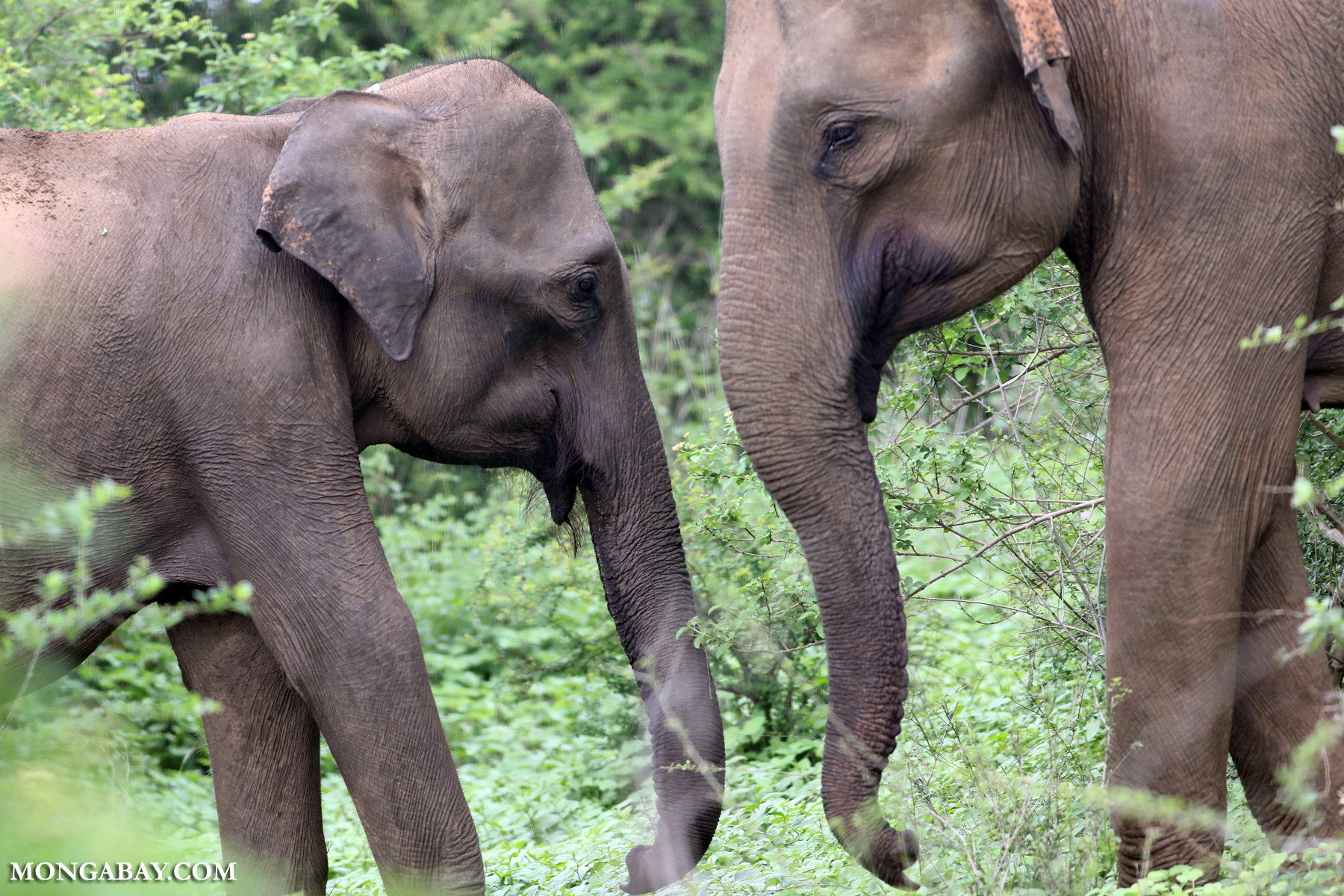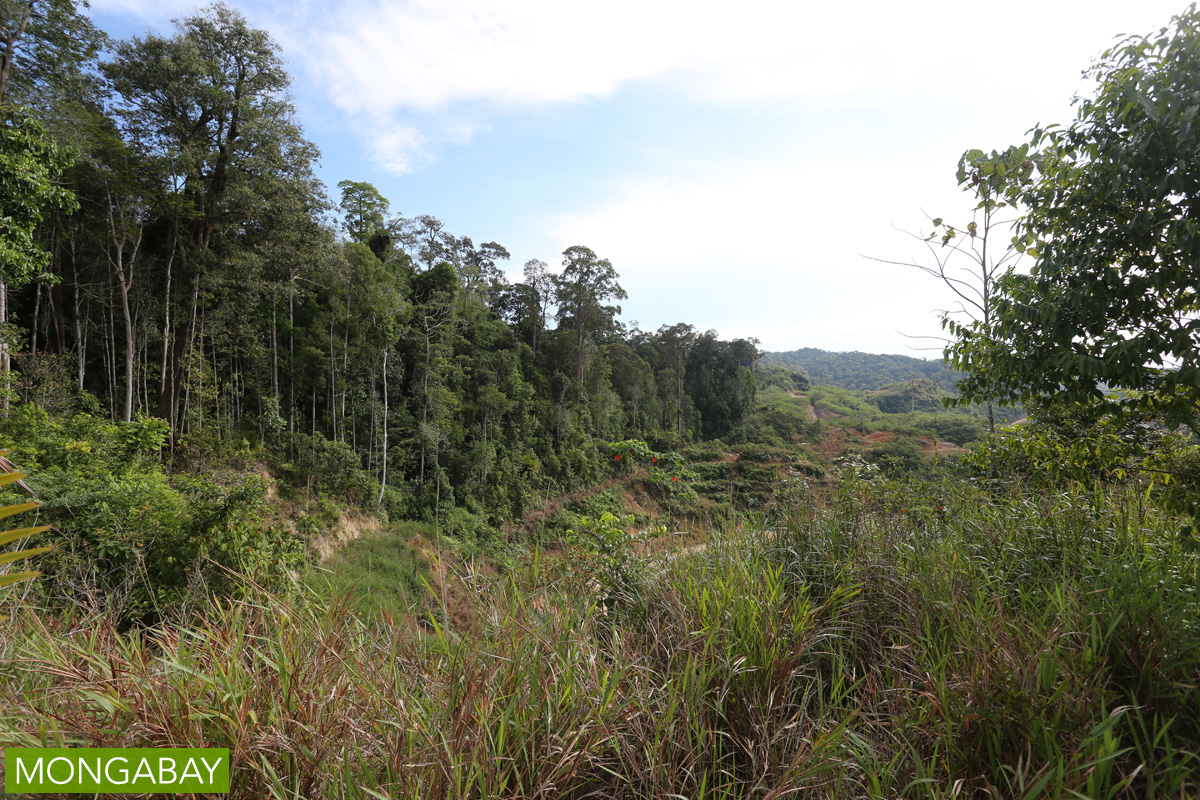You can move an elephant to the jungle, but it won’t stay there, study says
Nov 12, 2021
- Despite evidence that translocating “problem elephants” into protected forests to avoid conflict with humans can in fact exacerbate problems, it is still commonly practiced.
- A study published earlier this year revealed that elephants in Peninsular Malaysia prefer open, human-dominated landscapes over primary forests, casting further doubt over translocations, since relocated elephants will tend to gravitate back toward these “prime” habitats where conflict recurs.
- The study sparked renewed discussion among researchers on effective, long-term solutions to human-elephant conflict, the leading threat to Asian elephants, that avoid translocations.
- Experts say that people’s willingness to co-exist with elephants will be the most influential factor in the long-term survival of the species.
In 2012, researchers in Sri Lanka tracked the movements of a dozen “problem elephants” that had been translocated into protected areas due to conflict with humans. Their findings were worrying: rather than staying put in their new primary forest home, the translocated elephants strayed from their release sites, ultimately causing greater strife over a wider area than before. Four ventured into human settlements, where they damaged property and killed people; after eight months, five of the elephants had been killed.
The researchers concluded that such translocations help neither elephants nor people — they simply push the problem elsewhere. Yet the technique is still commonly practiced throughout the range of Asian elephants (Elephas maximus). In Peninsular Malaysia alone, experts estimate that some 600 elephants, roughly 40% of the current population, have been translocated since 1974.
Conflicts usually occur on the periphery of forests, where the canopy gives way to open vegetation of grasses and pioneer plants that are the elephants’ preferred fodder. The relentless expansion of plantations and agriculture into this zone is forcing people and elephants into closer contact. As a result, elephants have been known to raid crops, damage property and retaliate to hostile human interactions, leading to injuries and death on both sides.
Today, human-elephant conflict is the leading threat to Asian elephants. With our demands for natural resources pushing development ever deeper into elephant habitat, conflicts are set to intensify, say experts. Therefore, getting mitigation strategies right is vital to the species’ long-term survival.
A study published in Animal Conservation earlier this year has sparked renewed discussions among experts on effective, long-term solutions.
The findings reveal that elephants actually prefer to be in open, human-dominated agricultural landscapes over closed-canopy primary forests. The international team of scientists who studied the movements of 48 GPS-tracked elephants in Peninsular Malaysia, including 32 relocated individuals, said the results cast further doubts over elephant translocations as a means of conflict avoidance.

Translocating elephants to old-growth forests in protected areas is likely to fail, says the study, since elephants will inevitably gravitate back toward “prime” habitat on forest fringes, where conflicts recur. Moreover, since translocated elephants are unfamiliar with their release site, they can become disorientated and cause even more problems.
The “high ecological overlap between elephants and people … means that elephants will always tend to come into conflict with people when sharing landscapes,” says the study.
Crucially, experts say that if Asian elephants continue to be translocated away from their preferred habitats, the endangered species will continue to spiral toward extinction.
Only “a small fraction of Asian elephant range lies in protected areas,” Prithiviraj Fernando and Jennifer Pastorini of Sri Lanka’s Centre for Conservation and Research said in a recent commentary on the Malaysian study. “Species’ range extent is an important determinant of its population size. Consequently, for Asian elephants and many other wildlife species, conflict management, based on elimination from human-dominated areas, will cause significant population declines.”
Fernando and Pastorini call for conflict mitigation strategies to move away from prioritizing short-term human outcomes. Translocation, they write, “is often motivated by a desire to rid the landscape of elephants, as human-elephant conflict ‘mitigation’ is heavily biased towards solving people’s problems.”
In particular, they express concern about the high rate of removal and relocation of female elephants in Peninsular Malaysia, which accounted for 23% of translocated elephants in the study. The females live in close-knit family groups, so “translocated females and the groups from which they are removed are likely to experience severe stress and social disruption,” they write.
Moreover, Fernando and Pastorini said the relocation of large numbers of individuals into protected areas that already host elephants “reflects a lack of biological insight and care for animals,” as both the relocated animals and the receiving population are impacted by an increased strain on limited resources.

In another commentary, Lydia Tiller and Harry Williams of nonprofit Save the Elephants said short-term solutions like translocation simply treat the symptoms and not the underlying causes of human-elephant conflict, such as habitat loss and land-use change.
“The problem with translocation is that it instils an attitude in local communities that human-elephant conflict (HEC) can simply be addressed by removing elephants from the affected areas,” they write. “However, such a strategy can move the problem elsewhere. Effective management of HEC should instead focus on promoting tolerance of elephants.”
Fernando and Pastorini agree that methods of mitigation that focus on changing people’s behavior to prevent human injury and death rather than direct removal of elephants are likely to be the most successful. They also said that farming communities must bear at least part of the responsibility for mitigating conflict.
While absorbing the costs of crop losses and mitigation measures might be possible for large commercial plantation companies, it is not so easy for others. According to the original study, tolerance of elephants is declining among Indigenous Orang Asli communities who share their forest home with elephants in Peninsular Malaysia, and low among smallholder farmers. Equipping these vulnerable communities with ways to live alongside elephants will be key, say the researchers.
Tiller and Williams emphasize that reducing farmers’ dependence on agricultural profits by establishing revenue streams via tourism or ecosystem payments could increase their tolerance to crop losses. The original study authors also suggest that city dwellers who do not directly experience losses from elephant conflict, but who benefit indirectly from elephant conservation, should be involved in raising funds for mitigation.
All of the researchers agree that the best long-term pathway is a combination of measures, focusing on both tolerance and crop protection. Approaches that blend land-use planning to protect natural habitats and prevent further habitat encroachment, exclusionary measures like fences and trenches, financial compensation for damage, and education will all help.
“Since most of the global Asian elephant population occupies human-dominated landscapes,” the study authors said in a recent response, “it seems fair to argue that people’s willingness to coexist with elephants is the most influential factor for Asian elephant survival in the 21st century.”
Banner image: An Asian elephant in forest edge habitat in South Asia. Image by Amanda Perez/Smithsonian National Zoo via Flickr (CC BY-NC-ND-2.0)
Citations:
Fernando, P., Leimgruber, P., Prasad, T., & Pastorini, J. (2012). Problem-elephant translocation: Translocating the problem and the elephant? PLOS ONE, 7(12), e50917. doi:10.1371/journal.pone.0050917
De la Torre, J. A., Wong, E. P., Lechner, A. M., Zulaikha, N., Zawawi, A., Abdul‐Patah, P., … Campos‐Arceiz, A. (2021). There will be conflict — agricultural landscapes are prime, rather than marginal, habitats for Asian elephants. Animal Conservation, 24(5), 720-732. doi:10.1111/acv.12668
Fernando, P., & Pastorini, J. (2021). Whither the science in wildlife management? Animal Conservation, 24(5), 735-737. doi:10.1111/acv.12743
Tiller, L. N., & Williams, H. F. (2021). The elephant in the farm: Long‐term solutions are the key to coexistence. Animal Conservation, 24(5), 733-734. doi:10.1111/acv.12741
De la Torre, J. A., Wong, E. P., Lechner, A. M., Zulaikha, N., Zawawi, A., Abdul Patah, P., … Campos‐Arceiz, A. (2021). Towards tolerable human-elephant coexistence in tropical Asia. Animal Conservation, 24(5), 740-742. doi:10.1111/acv.12749
FEEDBACK: Use this form to send a message to the author of this post. If you want to post a public comment, you can do that at the bottom of the page.